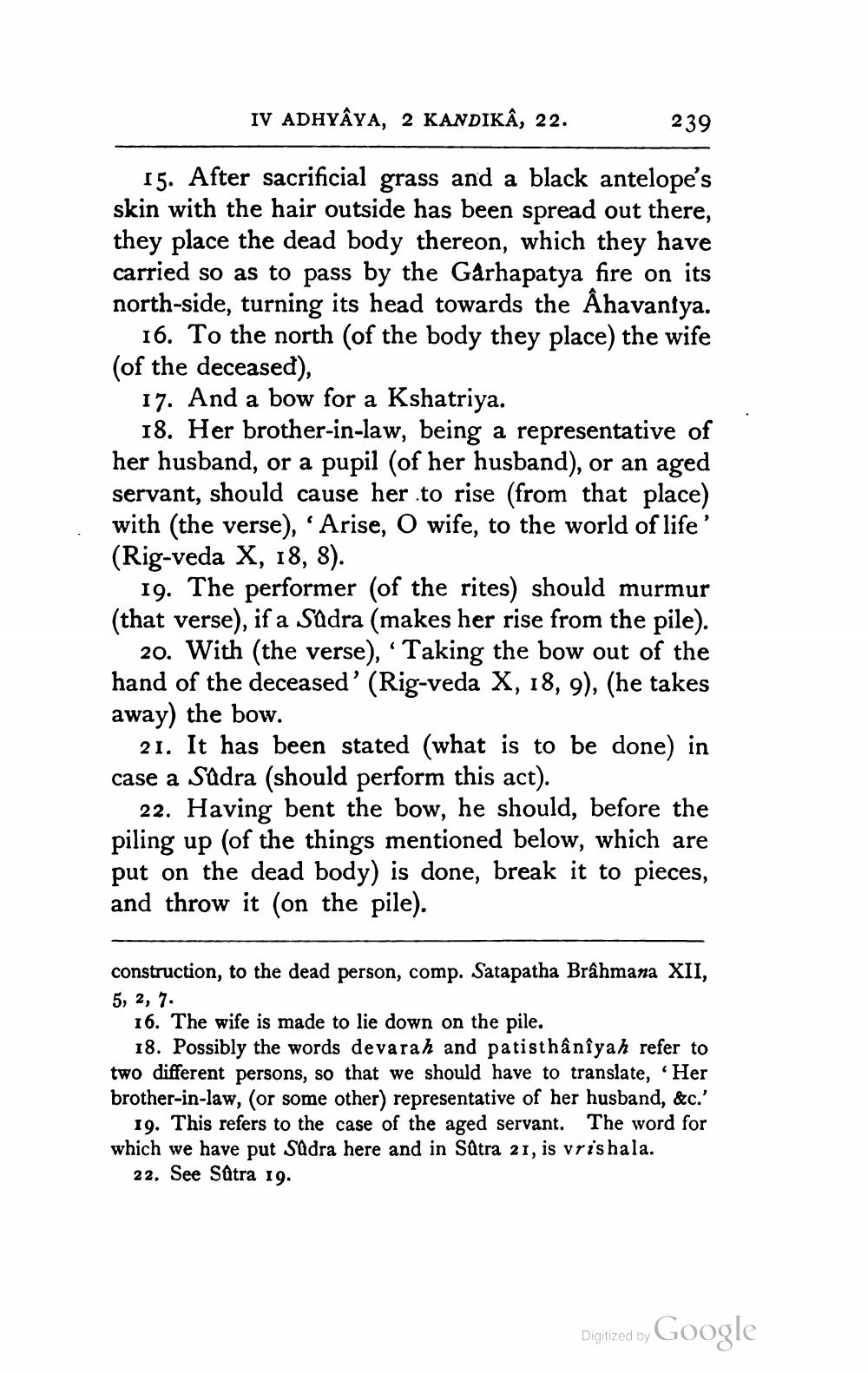________________
IV ADHYÂYA, 2 KANDIKÂ, 22.
239
15. After sacrificial grass and a black antelope's skin with the hair outside has been spread out there, they place the dead body thereon, which they have carried so as to pass by the Garhapatya fire on its north-side, turning its head towards the Ahavanfya.
16. To the north (of the body they place) the wife (of the deceased),
17. And a bow for a Kshatriya.
18. Her brother-in-law, being a representative of her husband, or a pupil (of her husband), or an aged servant, should cause her to rise (from that place) with (the verse), 'Arise, O wife, to the world of life' (Rig-veda X, 18, 8).
19. The performer (of the rites) should murmur (that verse), if a Sudra (makes her rise from the pile).
20. With (the verse), ‘Taking the bow out of the hand of the deceased' (Rig-veda X, 18, 9), (he takes away) the bow.
21. It has been stated (what is to be done) in case a Sudra (should perform this act).
22. Having bent the bow, he should, before the piling up (of the things mentioned below, which are put on the dead body) is done, break it to pieces, and throw it (on the pile).
construction, to the dead person, comp. Satapatha Brâhmana XII, 5, 2, 7.
16. The wife is made to lie down on the pile.
18. Possibly the words devarah and patisthânîyah refer to two different persons, so that we should have to translate, 'Her brother-in-law, (or some other) representative of her husband, &c.'
19. This refers to the case of the aged servant. The word for which we have put Sadra here and in Sätra 21, is vris hala.
22. See Sūtra 19.
Digitized by Google




